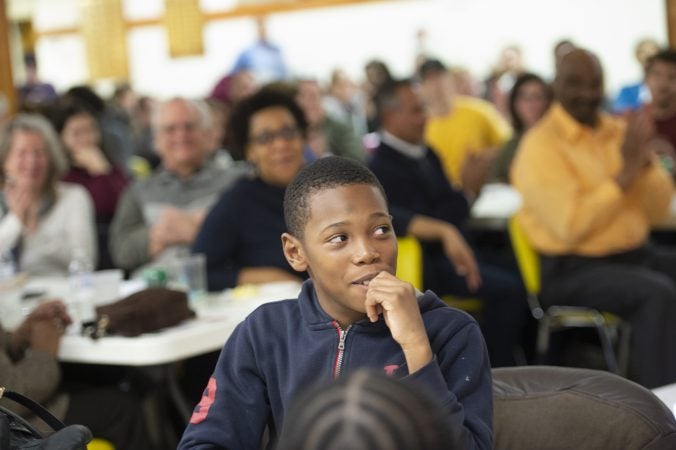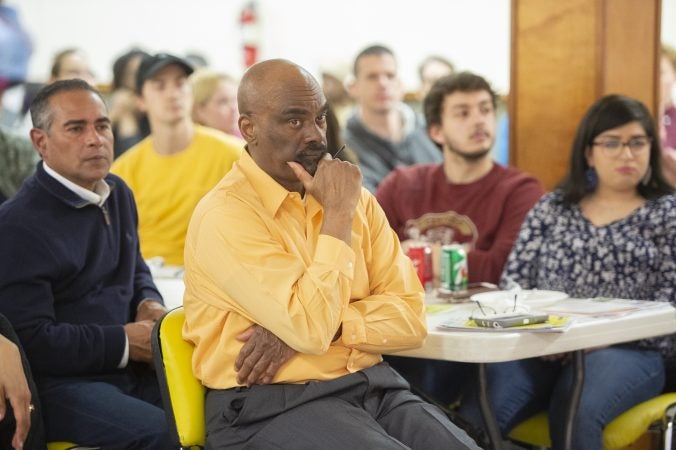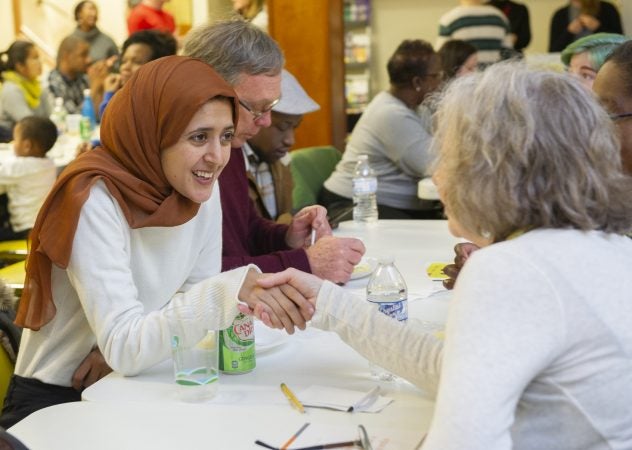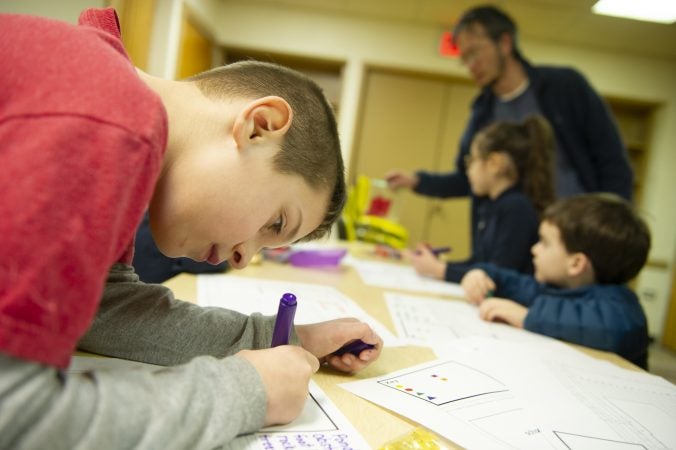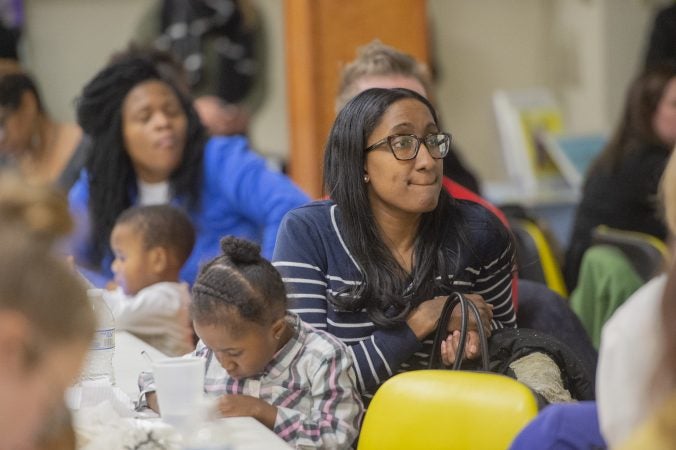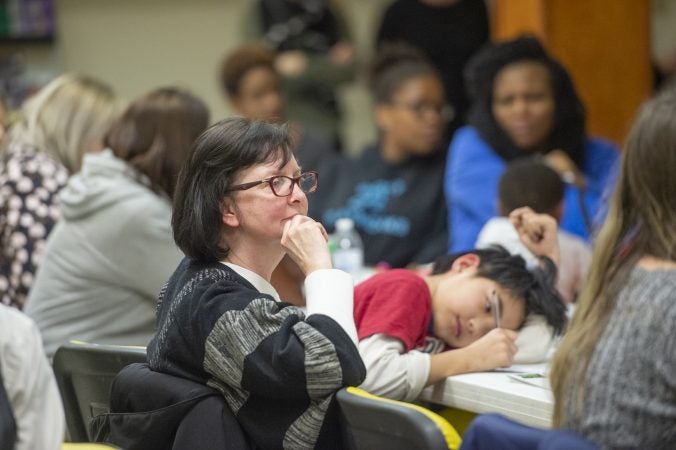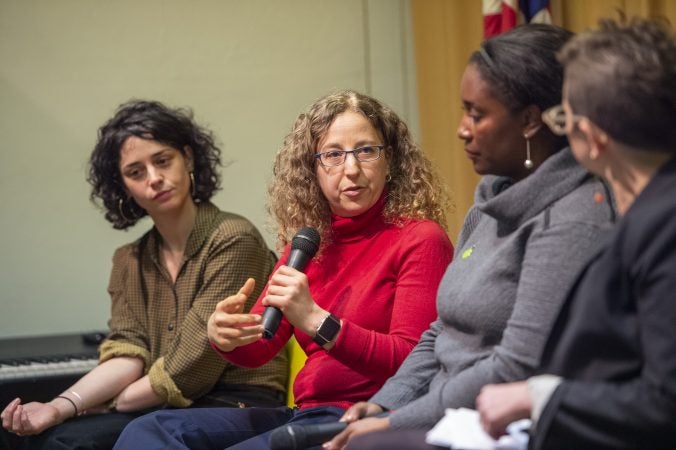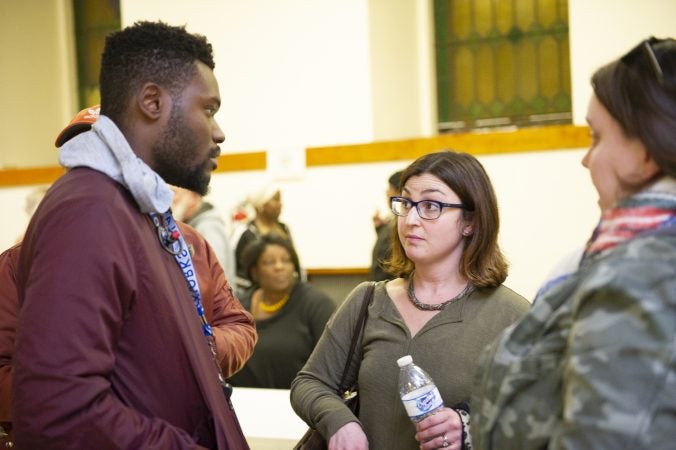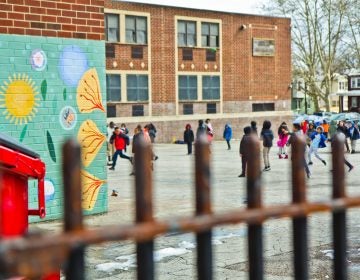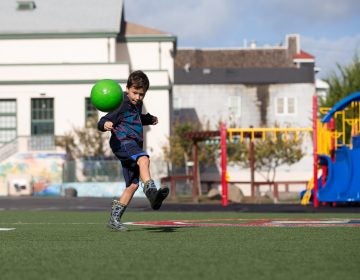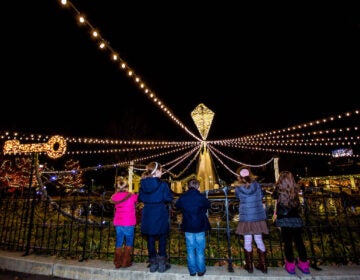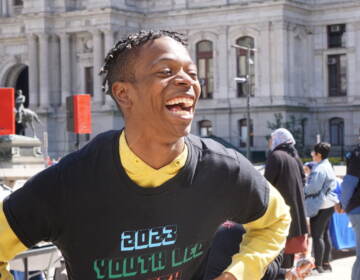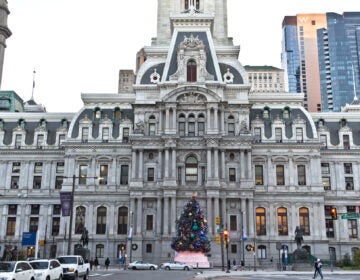WHYY Community Conversation: The push for playgrounds brings people together
WHYY hosted “Uneven Play,” a community conversation with parents, school district representatives — and kids — to discuss playground inequity.
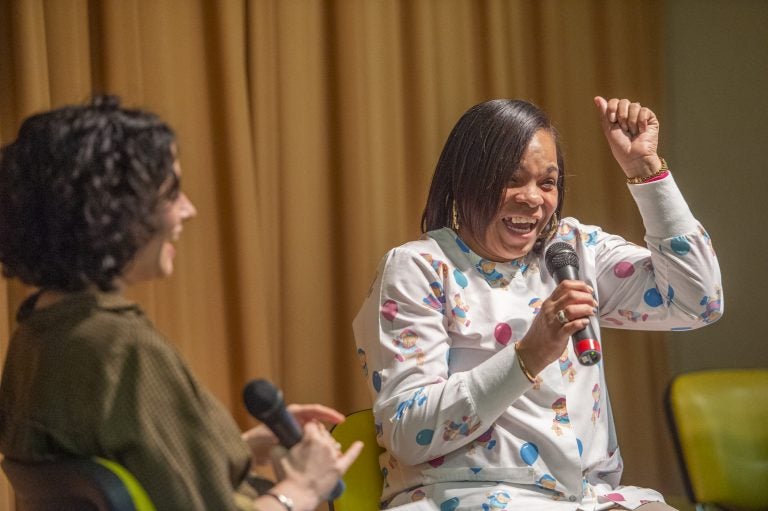
Antoinette Reynolds (right) talks with WHYY Health Reporter Nina Feldman. Reynolds lives across the street and spends lots of her time as unofficial lookout for kids who play in the empty lot at Lowell Elementary. Here, she celebrates that Lowell Elementary is scheduled to get a playground soon. (Jonathan Wilson for WHYY)
Judah Harvey is 10. He’s attended two schools in his life — neither has a playground.
He says at Olney Christian School, there’s a “big space with mulch and some trees.” No jungle gym or swings — but even having trees and soft mulchy places is an upgrade from the condition of some public school playlots in Philadelphia. Many city kids spend recess on bare, cracked concrete.
Friday evening WHYY gathered people to talk about playground inequity.
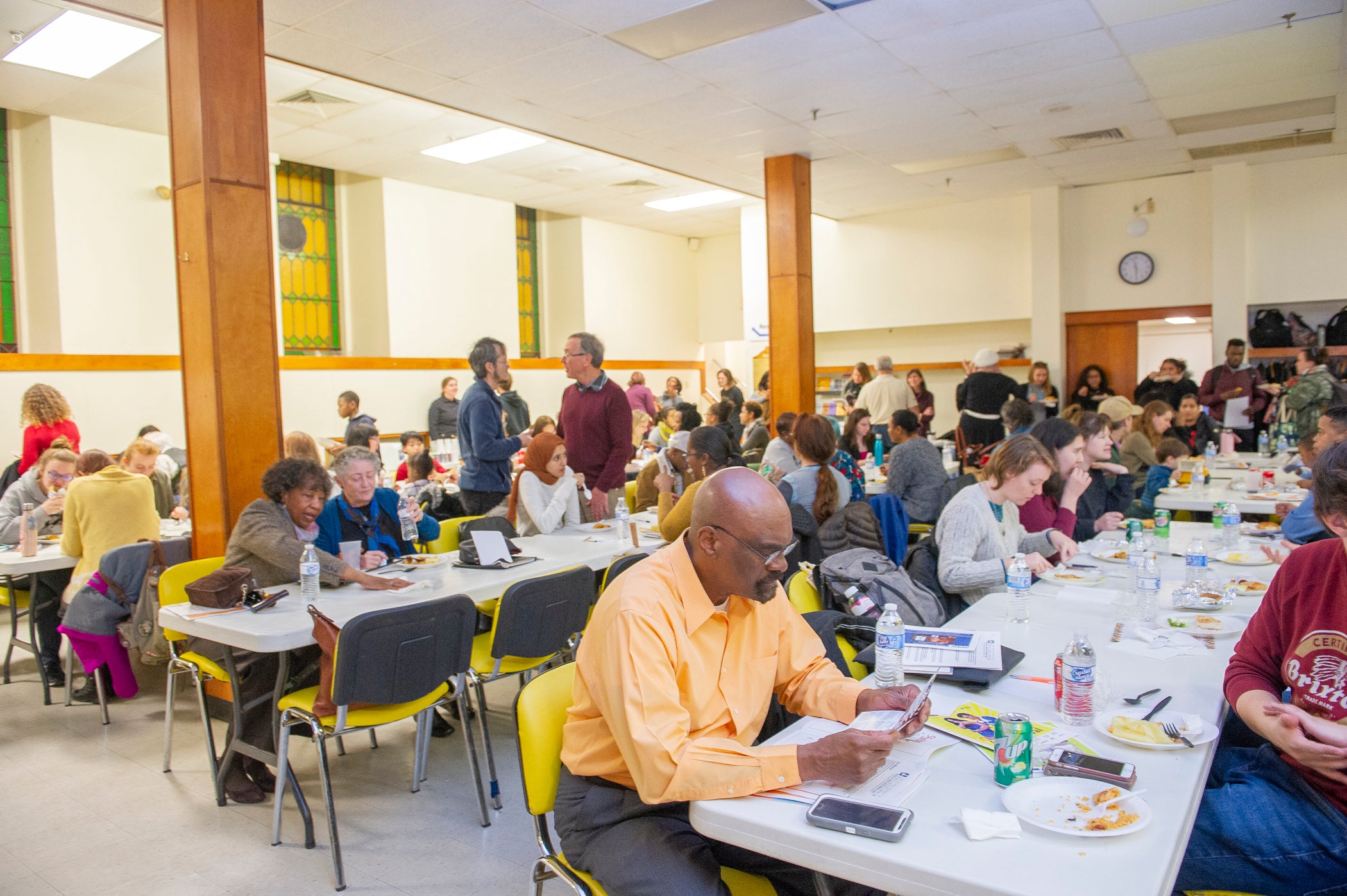
UnEven Play — a dinner and community conversation — is part of WHYY’s civic dialogue and reporting efforts, which uncovered that two-thirds of Philadelphia public elementary schools don’t have playgrounds.
Philadelphia School District Chief Operating Officer Danielle Floyd said the district is making progress, although there is a lot more to do.
“These projects take time,” Floyd said. “This is not HGTV. There is design, there is soil testing. It’s a lot.”
She was apart of a panel discussion that included an environmental planner and journalists.

Playground-building projects take significant investment — and ongoing safety upkeep. Philadelphia recently built a lower-priced play area at Ellwood Elementary School in Philadelphia’s Oak Lane neighborhood for $50,000.
“We’ve done one for $50,000,” Floyd said. “However, the price ranges from $375,000 and can go up to one million for a playground.”
That’s big dollars for the cash-strapped school district, but Sharon Danks, CEO of Green Schoolyards America, said that money is actually lower than the average investment in other cities such as Chicago and New York City.
Danks says playground advocates should think of playgrounds as a part of the solution for many problems — from childhood obesity and trauma to stormwater runoff. That thinking, she says, leads communities to get creative about the different pots of money that can be used to fund playground projects.
District schools have many areas to address, Floyd said, but safe playgrounds are also a priority.
“We have a lot of challenges,” Floyd said. “We have windows that need fixing, unreliable heat … but it can’t be a trade-off. We can have solutions to multiple problems, but it’ll make the process slower. We’ll do whatever it takes, get partnerships to help us, but we’ll do it.”
The event was held at St. Paul’s Lutheran Church in Philadelphia’s Olney neighborhood. After music from NewERA Trio Jazz Medley and a dinner of yuca and empanadas from La Calenita Bakery, neighbors talked about the importance of play spaces.
Olney resident Leah Peter drives all the way to the Northeast to bring her 4-year-old daughter Isabella to a playground. The trek means “Izzy” only gets to go on the weekends.
“She asks to go outside a lot,” Peter said. “I’m always trying to find events for her to play. I have a car but I know not everyone has that.”
Rob Grace lives in Olney with his four children, ages four months to 8-years-old. He said not having a playground nearby was unheard of where he’s from in Illinois. To alleviate some of the lack of play time, two of his oldest daughters are involved with Girl Scouts.
“The girls have friends in Girl Scouts that live in the suburbs that they visit,” Grace said. “Every time they come back they say ‘they’re so lucky to have a playground.’ ”
Regina Neely, who’s raising her six-year-old grandson, lives near Fisher Park in the Olney section of Philadelphia, but if Josiah wants to go somewhere else, she has to drive.
“We’re fortunate that we have Fisher but you can drive around awhile — too far to walk — before you see a playground,” Neely said. “If you don’t have a car and have to take a bus and have two or three children, who wants to do that? It’s expensive.”
While environmental planner Sharon Danks says playgrounds and green spaces get kids moving. Philadelphia grandmother Regina Neely says challenging playground inequity could be a strategy against delinquency.
“That’s Philadelphia’s problem as a whole, all the violence,” Neely said. “There’s not enough activity. These kids’ energy needs to be channeled.”
“I never had a playground growing up,” said L.J. Brubaker, who uses the they/them pronouns.
“It wasn’t until high school when I had friends in Lower Merion when I realized that’s not everyone’s experience. When you don’t have things, you don’t think you deserve it. I never expected [a playground],” Brubaker said.
Brubaker says their schoolyard was a concrete lot painted over with a United States map. They remember playing ‘state games’ where children would say “bounce the ball on Arkansas.”
Sounds fun, actually. Throughout the evening many community members made the point that parents and kids “make do” with what they have. Even if they play on paved-over parking lots, they find innovative, imaginative ways to use those play spaces.
Meanwhile, they are also planning for and working for playgrounds.
WHYY is your source for fact-based, in-depth journalism and information. As a nonprofit organization, we rely on financial support from readers like you. Please give today.


